Please activate JavaScript in your browser to use all interface options.
Rosneft Concludes Arctic Field Research Season
21 October 2021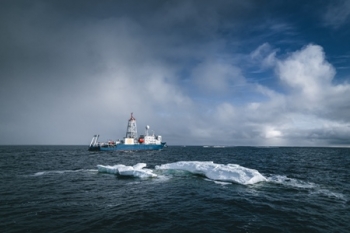
The first ever geological wells have been drilled in the waters of the Eastern Arctic during Rosneft Oil Company’s research expedition. The work was carried out in the Laptev Sea, near the islands of Kotelny and Novaya Zemlya. The expedition’s objective was to collect core samples. The core is a valuable rock material, a direct source of geological data required to determine the age (stratification), composition and conditions of formation for continental shelf rocks under research. A total of six stratigraphic wells were drilled, 415 metres of core was taken and the total depth of the wells (including non-core drilling) amounted to 840 metres.
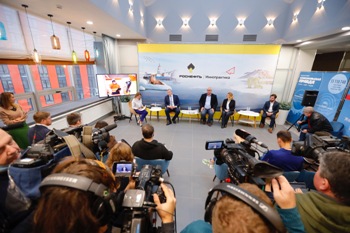 Company representatives spoke about the work of the expedition at a press conference on the results of the 2021 field research season. The core samples will be examined by specialists from Innopraktika, a non-governmental development institute, at the Geology Department of the Lomonosov Moscow State University. This will help scientists develop a reliable geological model of the region and obtain up-to-date data on its oil and gas potential.
Company representatives spoke about the work of the expedition at a press conference on the results of the 2021 field research season. The core samples will be examined by specialists from Innopraktika, a non-governmental development institute, at the Geology Department of the Lomonosov Moscow State University. This will help scientists develop a reliable geological model of the region and obtain up-to-date data on its oil and gas potential.
In 2020, Rosneft’s scientific geological expedition worked in the north of the Kara Sea. Stratigraphic drilling in the Chukchi Sea is planned for 2022. This will provide specialists with a wealth of up-to-date data on Russia’s northern seas.
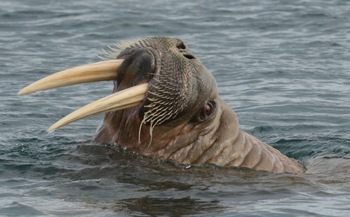 In 2021, Rosneft’s environmental expeditions also worked in high latitudes to study, monitor and conserve populations of polar bear, Atlantic walrus and wild reindeer. The research was conducted jointly with the Severtsov Institute for Ecology and Evolution of the Russian Academy of Sciences, the Centre for Marine Research of the Moscow State University, and the Siberian Federal University.
In 2021, Rosneft’s environmental expeditions also worked in high latitudes to study, monitor and conserve populations of polar bear, Atlantic walrus and wild reindeer. The research was conducted jointly with the Severtsov Institute for Ecology and Evolution of the Russian Academy of Sciences, the Centre for Marine Research of the Moscow State University, and the Siberian Federal University.
Through the Rosneft programme, walrus rookeries on the Franz Josef Land archipelago, the Orange Islands (the territory of the Russian Arctic National Park) and Victoria Island were surveyed in detail for the first time. A detailed mapping of known rookeries and a full-scale census of animals was carried out using drones. The resulting population figure of more than 7,000 animals doubles the previous estimate.
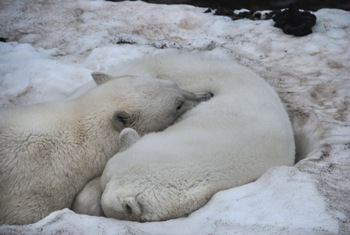 In spring 2021, when polar bear females emerged from their maternity dens, surveys were conducted on Alexandra Land Island in the Franz Josef Land archipelago. Scientists used a quadcopter to get unique footage of the bears with their offspring. From August through September 2021, work was carried out in the Cape Zhelaniya area on the Novaya Zemlya archipelago during the ice-free period, the most challenging one for polar bears. The specialists performed complex morphometric measurements of the animals, weighed them and took blood and fur samples for genetic, biochemical and toxicological analyses.
In spring 2021, when polar bear females emerged from their maternity dens, surveys were conducted on Alexandra Land Island in the Franz Josef Land archipelago. Scientists used a quadcopter to get unique footage of the bears with their offspring. From August through September 2021, work was carried out in the Cape Zhelaniya area on the Novaya Zemlya archipelago during the ice-free period, the most challenging one for polar bears. The specialists performed complex morphometric measurements of the animals, weighed them and took blood and fur samples for genetic, biochemical and toxicological analyses.
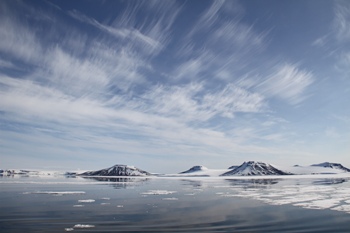 Wild reindeer studies were also conducted during the spring and summer-autumn seasons. The most extensive comprehensive animal monitoring in the project’s history was organised to determine the size of the Taimyr-Evenki population and their migration routes. During ground and aerial censuses, photo and video footage was taken, followed by identification of the animals, registration of locations of anthropogenic impact on the herd, and collection of samples of biological material. 18 reindeer were tagged with collars with satellite transmitters.
Wild reindeer studies were also conducted during the spring and summer-autumn seasons. The most extensive comprehensive animal monitoring in the project’s history was organised to determine the size of the Taimyr-Evenki population and their migration routes. During ground and aerial censuses, photo and video footage was taken, followed by identification of the animals, registration of locations of anthropogenic impact on the herd, and collection of samples of biological material. 18 reindeer were tagged with collars with satellite transmitters.
The data from the fieldwork will be processed and published, including that as part of the Environmental Atlases of the Seas of Russia series, which is published jointly with Innopraktika. Based on the information obtained, Rosneft will develop recommendations for the study, monitoring and conservation of key Arctic animal species.
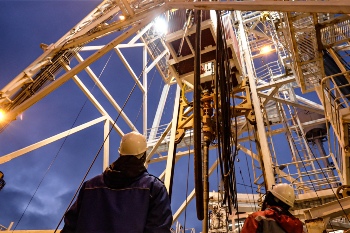 |
 |
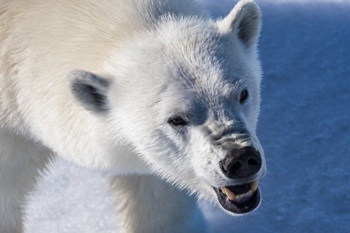 |
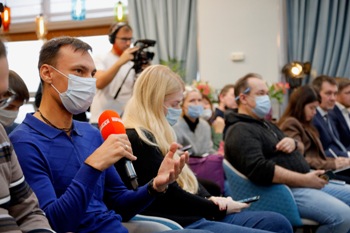 |
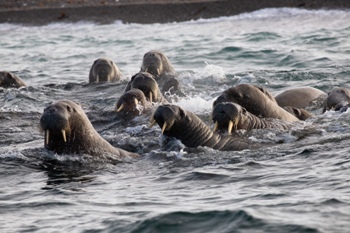 |
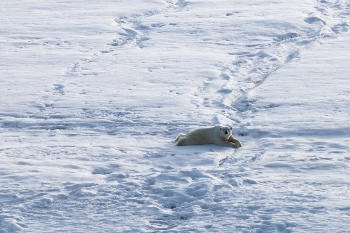 |
Rosneft
Information Division
October 21, 2021

-315xx70.png)

